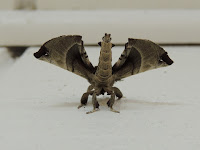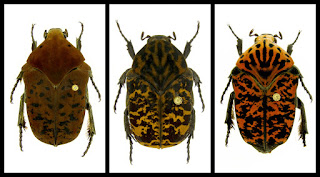Since I work in an insect-centric business, I decided to look at dragon insects in honor of the last episode of Game of Thrones (yes, I’m one of “those” people). Dragons are most closely associated with reptiles and there are many of those that look like dragons. There are also many sea creatures that are dragon-like. Not to mention real life flying dragons, like in this video. In the insect realm, there are some insects that have latched onto the dragon name for one reason or another, even though they don’t really resemble dragons much. Let's take a look at some of these:

Dragonflies – These are the creatures that first come to mind when thinking “dragons + insects”. There are 5,000 species of these fascinating flying insects and it seems that each one must be vying with the next to be the most beautiful. Here are some top contenders for that title. As lovely as they are, dragonflies are deadly predators who devour fellow insects. But how did they come to be called dragonflies? Interestingly enough, the name comes from folklore, although their homicidal inclinations may be what made the name stick. If you are interested in seeing an award-winning video of the dragonfly world, check it out here. The super-macro photography is simply amazing!
 |
| Apatelodes torrefacta |

Dragonhead Caterpillar – Now we get to an insect that actually has dragon features,specifically armored heads with multiple pointy horns and spines down the length of the body. At least, those are the basic ornamentations in this group of caterpillars, as each of the 400 different species in this group has its own spin on the dragon look. Some have Darth Vader-type black helmets and some look like fuzzy Gummi worms. Dragonhead caterpillars are found across the world in tropical and temperate environments and their looks are as varied as their environments. Check out a cool one trucking along here.
 |
| Lamproptera curius |
 |
| Pheidole viserion |
Dragon Ants – A few years back, scientists discovered two new ant species in New Guinea. While this may not be terribly surprising given the teeming cauldron of biodiversity that New Guinea is, these particular ants have a very unique appearance. Their very large heads are not unusual amongst ants, but their curve, hooked spiky armor along their bodies is. Apparently the scientists who got to name them are Games of Thrones nerds, because somewhere along in the naming process they decided that the ants look like Khaleesi’s dragons. So they became Pheidole drogon and Pheidole viserion. You can learn more about them and watch a virtual dissection here.
 |
| From left: Gymnetis drogoni, Gymnetis rhaegali and Gymnetis viserioni |
 |
| Nope, not really real... |
Submitted by Pam






No comments:
Post a Comment